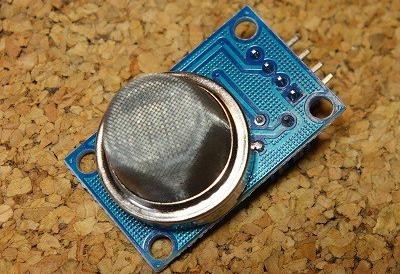MQ-2 Gas/Smoke Sensor
The MQ-2 gas and smoke sensor is a widely used sensor for detecting a range of gases, including smoke, carbon monoxide (CO), methane (CH4), and liquefied petroleum gas (LPG). It is commonly used in applications like smoke detectors, air quality monitoring systems, and safety alarms. The sensor uses a metal oxide semiconductor (MOS) as its sensing element, which reacts to the presence of gases by changing its resistance. When gases like smoke or methane come into contact with the sensor, it causes a change in conductivity, which is then measured and converted into an electrical signal.
The MQ-2 sensor has both an analog output and a digital output. The analog output provides a voltage that varies according to the concentration of gases detected, allowing for more precise measurements of gas levels. The digital output triggers a HIGH or LOW signal when a predefined gas concentration threshold is exceeded, making it useful for simple on/off applications, such as triggering alarms when smoke or gas is detected.
The MQ-2 sensor is easily interfaced with microcontrollers like Arduino using the analog or digital pins. Calibration is typically required for accurate readings, and it may be affected by environmental factors such as temperature and humidity. Despite these limitations, the MQ-2 is popular for low-cost, DIY safety projects and air quality monitoring systems.
The MQ-2 sensor has both an analog output and a digital output. The analog output provides a voltage that varies according to the concentration of gases detected, allowing for more precise measurements of gas levels. The digital output triggers a HIGH or LOW signal when a predefined gas concentration threshold is exceeded, making it useful for simple on/off applications, such as triggering alarms when smoke or gas is detected.
The MQ-2 sensor is easily interfaced with microcontrollers like Arduino using the analog or digital pins. Calibration is typically required for accurate readings, and it may be affected by environmental factors such as temperature and humidity. Despite these limitations, the MQ-2 is popular for low-cost, DIY safety projects and air quality monitoring systems.
